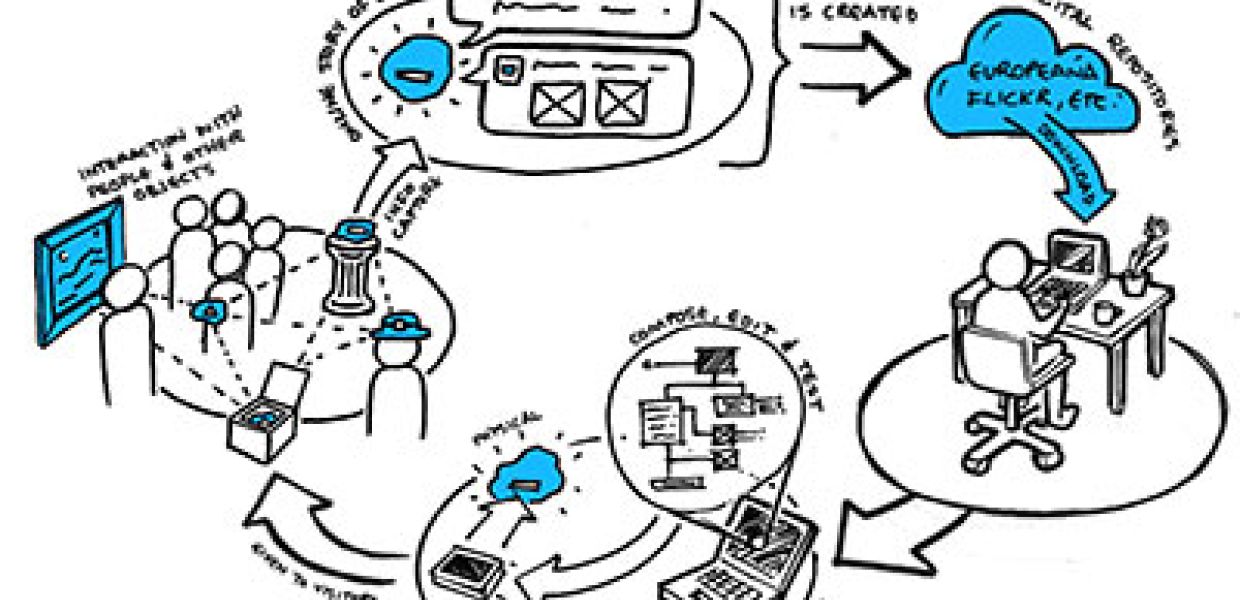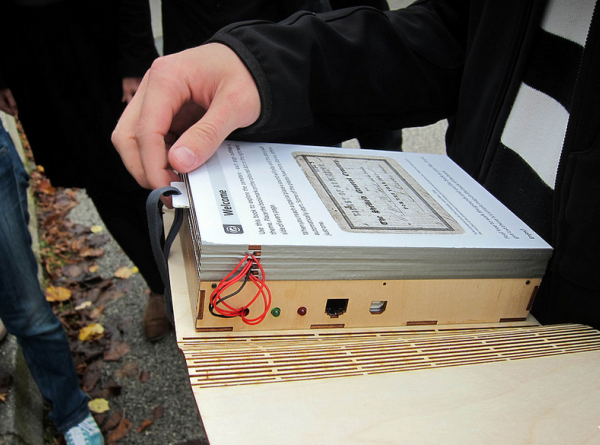Europeana meets the internet of things in meSch – Material EncounterS with digital Cultural Heritage

Guest blog by Monika Lechner and Marloes Scholtens from the meSch project.
The wealth of digital cultural heritage online is vast and steadily growing, while the modes to access and engage with it are limited and rather static. What if we could connect the digital with the physical, in ways that foster interaction between visitors, objects and the environment they are in? The meSch project - Material EncounterS with digital Cultural Heritage - will bridge the gap between visitors’ cultural heritage experience onsite and online by providing a platform for the creation of tangible smart exhibits. Personalisation technology will help to create a personally meaningful, rich, sensorial and socially expanded visitor experience through tangible, embedded and embodied interaction with digital content.
A platform to create interactive smart objects
Cultural heritage professionals, like curators and exhibition designers, will be able to create interactive smart objects and compose the narratives to be embedded within them without the need for specialised technical knowledge. To compose these narratives, cultural heritage professionals will be able to choose existing digital content from their own institutions (their collection databases or exhibition texts) , as well as openly available digital heritage content, add new content and edit these via the same platform. Europeana will be one of the most important sources that will be available via the meSch platform. Technical partners in the consortium are currently experimenting with the Europeana API and are looking into the Europeana Data Model for the data integration component of the system architecture of the meSch platform. This component supports a mediator architecture approach which allows querying multiple repositories using a common query language. Therefore adapters for data integration are being developed.
The workflow of creating narratives composed of internal and external digital repositories (right), smart objects and their sensorial interaction modes (left),and the logging of user behaviour to extend the visitor experience at home by recommendation services which will lead to new (user-generated) content that might be re-used later. Credit: meSch
Co-design: Users as designers
The meSch approach is grounded on principles of co-design: the participation of designers, developers and cultural heritage stakeholders in the process of creation and evaluation as equal partners, and with a do-it-yourself philosophy of making and experimenting. In practice, this results in three large-scale case studies in the three museums that are part of the consortium. There, a real-world evaluation of meSch technology with the public and cultural heritage stakeholders will take place. Museums and heritage sites outside of the consortium are also regularly visited, consulted and used for smaller case studies.
Exploratory prototypes
Exploratory prototypes for smart exhibits were developed during the first project year and are currently being evaluated. There is, for instance, the Companion Novel, an interactive book-like device developed for visitors to carry with them during their visits to the historic Sheffield General Cemetery. By selecting a particular page of the book through a specially designed bookmark, a visitor may select a narrative theme around the cemetery. Audio information played at hotspots is adapted to the theme the visitor has chosen. Watch a video showcasing this prototype.

One of the exploratory prototypes of interactive smart objects: the Companion Novel. Credit: Eva Hornecker (UoS)
Another prototype currently explored is an interactive magnifying glass. This prototype consists essentially of a wooden frame with a smartphone hidden in it. It aims to help visitors navigate through a museum on the one hand, and add contextual layers to an exhibition on the other. Results from these explorations will form the base for further development in year two.

One of the exploratory prototypes of interactive smart objects: the interactive magnifying glass. Credit: Eva Hornecker (UoS)
What’s next?
February 2014 marks the beginning of the second year of the project. Technology in development will be deployed in collaboration with cultural heritage institutions and evaluated by relevant stakeholders. The platform and technology will become available for use in 2016. Interested in getting to know more? Keep an eye on the meSch website or subscribe to our newsletter.
General information
meSch will run from February 2013 until February 2017 and receives funding from the European Community’s Seventh Framework Programme - ‘ICT for access to cultural resources’ (ICT Call 9: FP7-ICT-2011-9) under the Grant Agreement 600851.
The meSch consortium consists of Sheffield Hallam University, University of Stuttgart, Waag Society, University Carlos III Madrid. eCTRL, Fondazione Bruno Kessler, University of Limerick, University of Strathclyde, University Carlos III Madrid, Museo Storico Italiano della Guerra, Allard Pierson Museum, University of Amsterdam, Museon and Dutch Digital Heritage Foundation.

